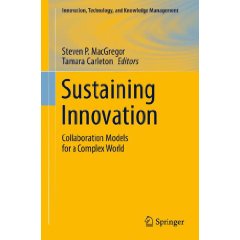In New Zealand the invitations have just gone out for Kiwi Foo Camp in February. As always there will be a mix of first timers and old hands attending. I’ve been very privileged to be invited to a few Foo Camps in the States and also in New Zealand, and one of the things that strikes me at every Foo is that for many first-timers the idea of running a session is daunting.
Most recently at Science Foo this year I spent time talking to two people around the bar at the hotel before the event kicked off. They were first timers, and weren’t even thinking of running sessions. However they were fascinating to talk to and I encouraged them both to run something. Both of them ended up doing so, and one person even went so far to kindly email me and thank me:
Thanks for encouraging me to give the seminar. I felt I was not perfectly prepared for the presentation although adequately prepared for the conversation as led on by excellent questions.
With that in mind I thought it was worth putting a few pointers online to encourage people to run sessions. Here’s my Ten Top Tips for first time Foo attendees:
- Above all else, think about what you can run a session on before you arrive. I’ve lost count of the number of times I’ve seen people paralysed by inaction as the session board opens and they left wondering what to write.
- Once you’ve got a session idea, put it online on the Foo wiki. Check back and see what comments other people make. Don’t be afraid to edit your session idea once it’s on the wiki.
- Check the attendee list to see if there are any potential collaborators attending. I’ve found that people are very receptive to the idea of helping to run a session.
- Don’t think that you have to have an hour of material to run a session. The best sessions I’ve seen involve someone talking for about fifteen minutes and then throwing the session open to discussion.
- When you actually arrive at Foo spend some time talking to people about your session. It’s far more interesting (and fun) if you can drum up some attendees by doing little sales pitches.
- When you post your session idea on the board, make sure it is catchy enough to attract attention, but not too over the top that it becomes worthy of a tabloid headline.
- If you can run a session without using slides, then do so. If you really feel the need to use PowerPoint then show pictures, not bullet points (the only good use for a bullet point is to shoot the presenter).
- The success of your session is not dictated by the quantity of attendees, but by the quality of the conversation.
- Don’t be intimidated if people leave your session half way through. Others may join half way through. It’s not a sign of something wrong, it’s just that there’s so much on that people may be splitting their time across a number of sessions.
What’s your top tip that could be number ten?
